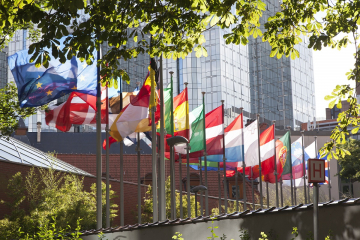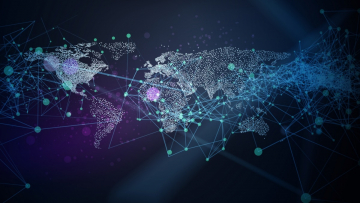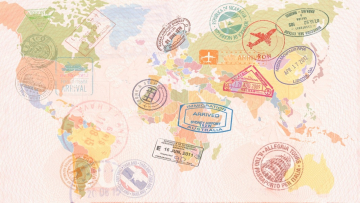In the ever-changing business world, mergers and acquisitions (M&A) happen all the time. As an environmental, health, safety, and sustainability (EHS&S) manager, that means you could suddenly be responsible for a facility that runs under a different language, in a different time zone, has cultural nuances you aren’t used to, and you may even face diverse regulatory paradigms that are structured differently.
In a webinar hosted by Antea Group titled “Order from Chaos – Global EHS&S Management Challenges and Solutions,” Lauren Corbett-Noon, EHS Compliance & Auditing Practice Leader at Antea Group, moderates a conversation with fellow colleagues Angelique Dickson, Vice President, Antea Group USA / President, Inogen Alliance; Alizabeth Aramowicz Smith, Health & Safety Practice Leader; and Scott Recker, Environmental Remediation Practice Leader. The discussion focuses on working with global clients across various sectors on identifying and controlling risks in compliance with the laws and regulations of local authorities.
To see the full discussion, click the button below to watch the webinar on-demand.
Watch On-DemandWhy Develop a Global EHS&S Perspective?
Putting in the time and effort to develop a global EHS&S perspective can benefit your organization in more ways than one, especially through the process of M&A:
- Compliance – On a very basic level, you need to have compliance assurance and meet the core regulatory requirements in all the locations you operate. At a minimum, you must follow the law and keep your employees safe.
- Performance – This is the next level, when you’re thinking about how to be more proactive around risk. How can your organization prevent and control injuries and illness at a global, regional, or site level?
- Brand – This is the highest level of aspiration. This is about trust. Have you built and maintained trust with your employees by keeping them safe and healthy? What about your stakeholder or customer’s trust in your company? If you focus on these elements, this can put you at a competitive advantage and feed into your Environment, Social, and Governance (ESG) initiatives.
The bottom line: there is no “one size fits all” management of EHS&S, especially at a global scale where you could have manufacturing in one country, distribution in another, and offices across the globe. There’s so much variety in every organization (e.g., headcount, diversity, facility types, etc.) all of which help to determine the solutions that make the most sense for you. There’s a lot to get ahead of to know before you go into a new country.
Supporting the Deal Team Through M&A
When working through global mergers or acquisitions, there are many considerations to keep in mind as an EHS&S professional. First, remember that doing deals and acquisitions on a global basis is a team effort! As EHS&S professionals, you have to support the deal team.
The one thing to always keep in mind when working with the deal team on an international basis is to have a business-first lens. The deal team is always thinking about the implications for the business. The M&A lifecycle is usually a complicated process, made even more complicated by global logistics. There are many issues to prepare for when integrating a new business. Understand the local culture, the local regulations, and most importantly, how the team you’re acquiring views risk.
When it comes to the due diligence phase of M&A, the earlier you can get involved, the better. The sooner you understand the strategy of that deal team, the better you can anticipate the questions they might ask and prepare for potential obstacles. Developing a customized due diligence process for your organization, getting involved with the deal team early, and defining a process with them is crucial. It will help ensure smooth communication, avoid roadblocks, and prevent any slowdown or stops in the M&A process.
Understand the Regulations at Each Phase
It’s also important to be aware that different regulations will apply differently to each phase of your business; from the design phase to the renovation phase through the normal operations phase. Basically, you need to know what you don’t know. That’s why outside of the US, it's important to conduct risk assessments and is even more important to keep them current. If you keep assessments current every time there’s a change in risk, it will help guide you through your business process.
For example, permits and reporting differ during the construction phase. Understanding what those legal inspection requirements are and what local authorities require is another great reason to map out what your requirements are early in your project and process.
Difficulty in Calibrating Regulatory Requirements Across the Globe
Even if you feel familiar with certain topics surrounding regulatory requirements, they can vary greatly across the globe. For example, some questions that may differ include:
- Do I have to do a risk assessment in this country?
- Is this particular waste hazardous in all countries?
- Do I need to provide a medical doctor?
- Do all these requirements apply to me if I’m only in an office space?
Certain activities or business types trigger the need for things like a doctor on site or a risk assessment. Across all countries, these answers may be different, and that’s something as a global EHS&S manager you have to be aware of when your company adds a new facility in a new location.
A common challenge in global M&A is in gathering information on regulatory requirements. While information is very readily available in the US and Europe through government databases, that is not the case everywhere. It can be a major challenge gathering information on a facility and you may have to spend a lot of time interviewing, looking at local facility records, and understanding the community. That’s why it’s so important to have someone local on the ground in those countries or regions to help gather information and fully understand regulatory requirements. With our global network of Inogen Alliance, having 75+ local independent companies on the ground gives a huge benefit of local knowledge on a global scale.
Successfully Managing Facilities from a Distance
To be a best-in-class global manager you need to identify the tools and insights that will help successfully manage facilities from a distance. Where do you begin?
- Identify your stakeholders
- Catalog and visualize the data you already have available to you
- Review where you have EHS staff and where you need them
- Confirm EHS&S roles and responsibilities of your staff
- Provide tools for Information (EHS permits and authorizations globally)
- Prioritize Next Steps (create a Roadmap and identify priority EHS programs)
Keys to Creating Order
There’s a lot to consider when managing global EHS&S challenges. To help, here’s a recap of steps you can take to keep everything in order when helping your deal team with an acquisition.
- Identification of Countries – you have to know your global footprint in all your countries.
- Set a Corporate Minimum Expectation – Are you meeting the bare minimum of compliance or looking at brand protection? What is the risk tolerance and the minimum expectation?
- Identification of Regulatory Tools – What regulatory tools do you already have, or can you use? You can use technology such as Learning Management Systems to assign compliance training across the globe by job type.
- Understand Cultural Differences – Regulatory climate and cultural differences will show you where you need to do different things or create common processes and synergies.
- Mergers and Acquisitions – Be part of the M&A team conversations as you move toward acquisition, as this will give you a preemptive opportunity to look at what the risk is, put it into your footprint, and have an impact as the process is going on.
All in all, managing a global EHS&S program has many complexities. Connect with our team of experts today to help guide you through your global EHS&S management strategy.
Want more news and insights like this?
Sign up for our monthly e-newsletter, The New Leaf. Our goal is to keep you updated, educated, and even a bit entertained as it relates to all things EHS and sustainability.
Have any questions?
Contact us to discuss your environment, health, safety, and sustainability needs today.









